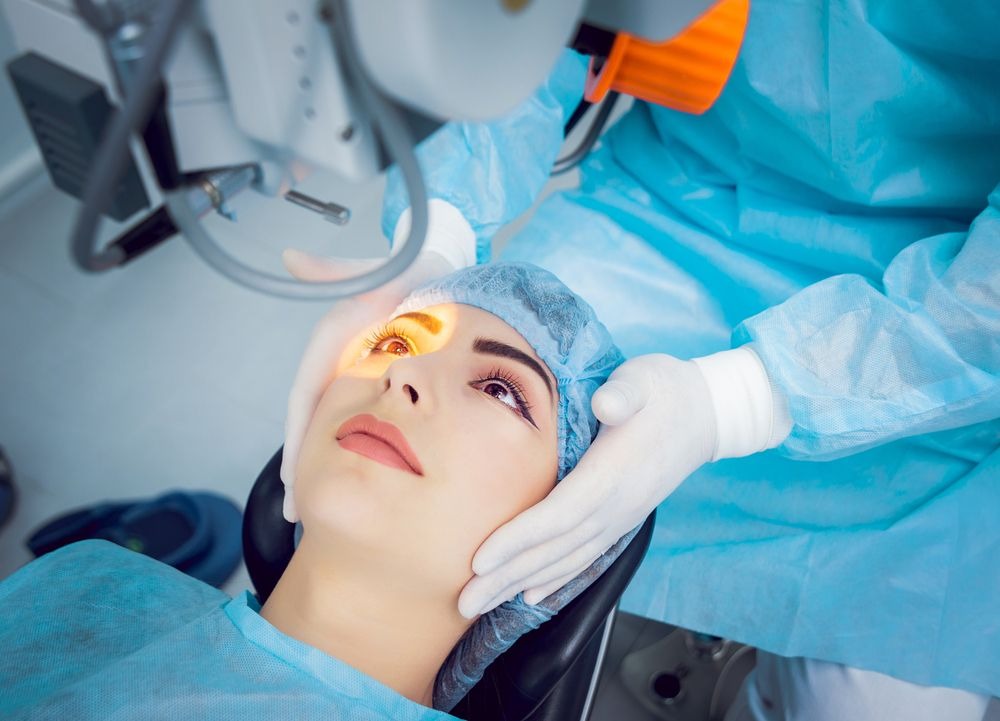Everything You Wanted to Know About Diabetic Retinopathy Laser Treatment

Diabetes mellitus causes your body to improperly utilize and store sugar. Diabetes can alter the blood capillaries, veins, and arteries that transport blood throughout the body. It can disrupt vision by producing cataracts, glaucoma, and, most significantly, damage to blood vessels inside the eye when combined with high blood pressure.
What is retinopathy?
Retinopathy is a diabetic and hypertensive condition caused by alterations in the blood vessels of the eye. The retina is a nerve layer in the back of the eye that detects light and aids in the transmission of images to the brain. When blood vessels in the retina become damaged, they may leak fluid or blood and develop brittle, brush-like branches and scar tissue. This can cause blurring or distortion of the pictures sent to the brain via the retina.
Diabetes retinopathy is the main cause of adult blindness in the United States. Untreated diabetes is reported to put people 25 times more at risk of blindness than the overall population. The longer you have diabetes and hypertension, the more likely you are to develop retinopathy.
Stages of diabetic retinopathy
There are two types (nonproliferative and proliferative) and four stages of diabetic retinopathy. The nonproliferative type of diabetic retinopathy refers to the disease's early stages, whereas proliferative refers to the disease's late stage.
Stage 1: Mild nonproliferative diabetic retinopathy
This is the most severe form of diabetic retinopathy, marked by small patches of enlargement in the retina's blood vessels. These swollen regions are known as microaneurysms. At this point, small amounts of fluid can escape into the retina, causing enlargement of the macula. This is a region of the retina toward the center.
Stage 2: Moderate nonproliferative diabetic retinopathy
Swelling of microscopic blood vessels begins to obstruct the blood supply to the retina, inhibiting normal feeding. This results in a buildup of blood and other fluids in the macula.
Stage 3: Severe nonproliferative diabetic retinopathy
A bigger section of the retina's blood vessels becomes clogged, resulting in a considerable decrease in blood flow to this area. The body receives signals at this stage to begin generating new blood vessels in the retina.
Stage 4: Proliferative diabetic retinopathy
This is the most severe stage of the disease when new blood vessels grow in the retina. Fluid leakage is more likely since these blood arteries are generally weak. This causes a variety of vision difficulties, including blurriness, a narrower range of vision, and even blindness.
Laser Treatment for Diabetic Retinopathy
Diabetic retinopathy laser treatment is one of the most common procedures. PRP laser for diabetic retinopathy is another name for this procedure.
Laser therapy, also known as photocoagulation, can aid in the prevention of eyesight loss. A laser is used in this form of surgery to shrink or seal blood arteries.
Your doctor will initially provide a local anesthetic to ensure your comfort during the treatment. Medication will also be used to dilate your pupil. Then, using laser technology, your doctor will flash light into your eye.
There are two types of laser diabetic retinopathy treatment:
- Scatter laser treatment helps to shrink blood vessels.
- Focused laser treatment helps to control or stop blood and fluid leaks.
Laser treatment may require more than one session to be effective.
Can I have laser eye surgery for diabetic retinopathy in both eyes at the same time?
Unlike cataract surgery, a Laser can be performed on both eyes on the same day, one eye after the other. When a doctor uses the laser on one eye, they can only accomplish a limited number of areas. Too many laser shots may end up in retinal edema. So, it makes sense to treat the second eye at the same time if necessary.
Can laser surgery for diabetic retinopathy restore my vision?
In diabetic retinopathy, laser therapy is used just to stabilize the condition and preserve existing eyesight. Laser surgery WILL NOT RESTORE YOUR VISION. It does, however, help to avoid additional vision loss and consequences that could lead to blindness.
Are there any side effects after laser treatment for diabetic retinopathy?
The Laser does not cause any discomfort. During the process, the patient may feel slight discomfort. There are no further negative effects in the hands of an expert retina specialist.
You may leave the clinic right after the procedure and resume normal activities. It is not necessary to bandage the eye. However, you will be unable to drive yourself home because your eyes will be dilated. Because of the dilating drops, your vision will be blurred for the remainder of the day. Some patients may notice a minor reduction in color vision, peripheral vision, or vision in low light.
Post a comment